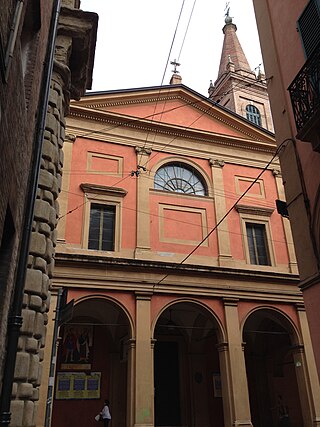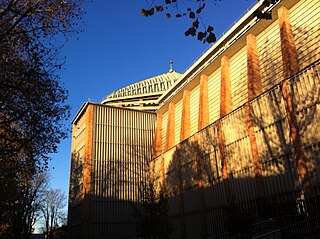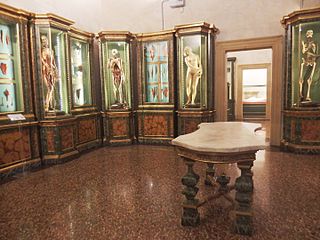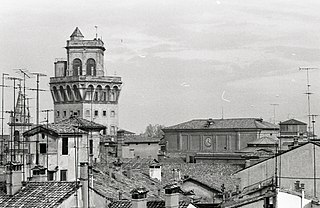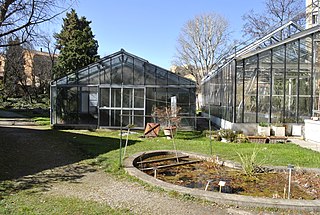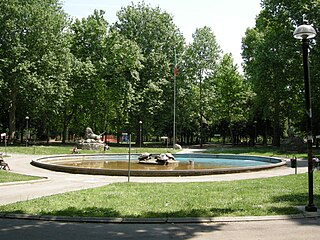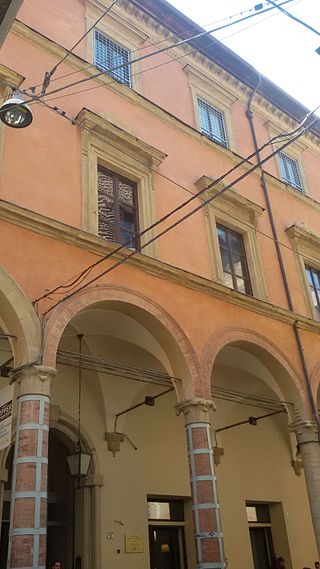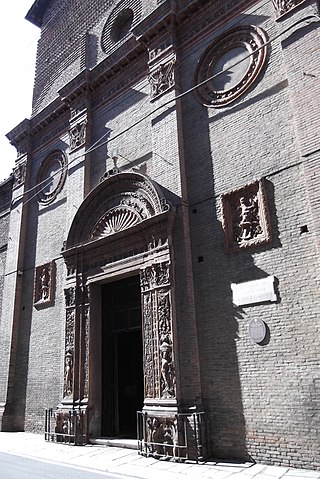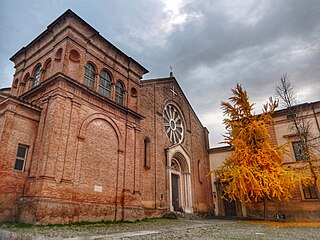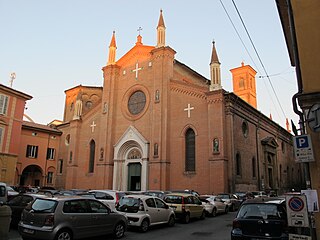39 Sights in Bologna, Italy (with Map and Images)
Legend
Premium Sights
Book tickets, guided tours and activities in Bologna.
Guided Free Walking Tours
Book free guided walking tours in Bologna.
Welcome to your journey through the most beautiful sights in Bologna, Italy! Whether you want to discover the city's historical treasures or experience its modern highlights, you'll find everything your heart desires here. Be inspired by our selection and plan your unforgettable adventure in Bologna. Dive into the diversity of this fascinating city and discover everything it has to offer.
Sightseeing Tours in BolognaActivities in BolognaThe basilica of Santo Stefano encompasses a complex of religious edifices in the city of Bologna, Italy. Located on Piazza Santo Stefano, it is locally known as Sette Chiese and Santa Gerusalemme. It has the dignity of minor basilica.
2. Palazzo Re Enzo
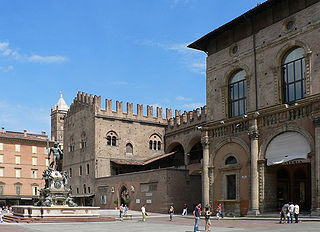
Palazzo Re Enzo is a palace located on Piazza del Nettuno, 1 in the historic center of Bologna, northern Italy. The palace takes its name from Enzio of Sardinia, Frederick II's son, who was prisoner here from 1249 until his death in 1272. The palace is presently used to sponsor cultural events and exhibitions.
3. Piazza Santo Stefano
Piazza Santo Stefano also known as Piazza delle Sette Chiese is a piazza of Bologna, Italy. It is a pedestrian zone, in a triangular space near the beginning of Via Santo Stefano, both of which are named after the Basilica of Santo Stefano which is located on the piazza.
4. Basilica di San Petronio
The Basilica of San Petronio is a minor basilica and church of the Archdiocese of Bologna located in Bologna, Emilia Romagna, northern Italy. It dominates Piazza Maggiore. The basilica is dedicated to the patron saint of the city, Saint Petronius, who was the bishop of Bologna in the fifth century. Construction began in 1390 and its main facade has remained unfinished since. The building was transferred from the city to the diocese in 1929; the basilica was finally consecrated in 1954. It has been the seat of the relics of Bologna's patron saint only since 2000; until then they were preserved in the Santo Stefano church of Bologna.
5. Asinelli Tower
The Asinelli tower is one of the so-called two towers of Bologna, symbol of the city, located in Piazza di Porta Ravegnana, at the intersection of the ancient streets San Donato, San Vitale, Maggiore and Castiglione. Erected, according to tradition, between 1109 and 1119 by the nobleman Gherardo Asinelli, the tower is 97.20 meters high, leans westwards for 2.23 meters and has a staircase consisting of 498 steps inside.
6. Tomba di Rolandino dei Romanzi
The tombs of the glossators of the Bolognese School preserve the remains of some of the first and most important professors of what in the Middle Ages was called the studium, i.e. the University, which in Bologna was renowned above all for the teaching of Law: they were called glossators because they commented on the texts of Roman law with explanatory additions in the margin, the "glosses", to make the contents of the passages under consideration clearer. These new professional figures, cornerstones of the city's political and cultural life, chose to be buried in places of great urban visibility.
7. Loggia dei Mercanti
The Palazzo della Mercanzia in Bologna, also known as the Loggia dei Mercanti or Palazzo del Carrobbio, overlooks the square of the same name. From the end of the fourteenth century to the end of the eighteenth century it was the seat of the Universitas mercatorum and some Corporations. Starting in 1797, with the French occupation, it became the headquarters of the Chamber of Commerce.
8. Sanctuary of the Madonna of San Luca
The Sanctuary of the Madonna of San Luca is a basilica church in Bologna, northern Italy, sited atop a forested hill, Colle or Monte della Guardia, some 300 metres above the city plain, just south-west of the historical centre of the city.
9. Museo Carducci
Casa Carducci is a historic building in Bologna, so called because it was the residence of the poet Giosuè Carducci and today the seat of a cultural institute dedicated to him which includes the historic residence with garden and monument, library and archive, house-museum, collection of Carducci's objects and documents, information center specialized in the writer's work, center for literary studies of the nineteenth and twentieth centuries. The institute is a special section of the Archiginnasio Library and houses the Commission for language texts of which Carducci was president as well as the civic museum of the Risorgimento.
10. Fontana del Nettuno
The Fountain of Neptune is a monumental civic fountain located in the eponymous square, Piazza del Nettuno, next to Piazza Maggiore, in Bologna, Italy The fountain is a model example of Mannerist taste of the Italian courtly elite in the mid-sixteenth century.
11. Chiesa di San Girolamo della Certosa
The Certosa di San Girolamo di Casara was the Carthusian monastic center of Bologna, built in the fourteenth century in the area west of the city and used as a public cemetery at the beginning of the nineteenth century.
12. Chiesa del Sacro Cuore di Gesù
The Church of the Sacred Heart of Jesus is a parish church in Bologna located just outside Porta Galliera, overlooking Via Matteotti, in the Bolognina area, in the Navile district. It is one of the most populated parishes in the city: its demographic coverage is well over ten thousand souls.
13. MAMbo
The Museo d'Arte Moderna di Bologna or MAMbo is a purpose-designed museum of modern and experimental art in Bologna, Italy. The Museo Morandi, which displays a large collection of works by Giorgio Morandi, is temporarily housed in a part of it.
14. Museo civico d'arte industriale Davia Bargellini
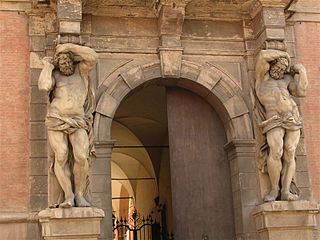
The Davia Bargellini Museum of Industrial Art is a museum located in the Palazzo Davia Bargellini in Bologna. It is part of the Civic Museums of Ancient Art and is managed by the Bologna Civic Museums Sector.
Wikipedia: Museo civico d'arte industriale Davia Bargellini (IT)
15. Museo del tessuto e della tappezzeria Vittorio Zironi
The "Vittorio Zironi" Museum of Textiles and Upholstery is a museum in Bologna, Italy, part of the system of the Civic Museums of Ancient Art of the municipality of Bologna. Founded by the upholsterer craftsman Vittorio Zironi, it is based in the neoclassical Villa Spada, in the Porto-Zaragoza district. The museum has been closed to the public since September 2018.
16. Chiesa di San Giacomo Maggiore
The Basilica of San Giacomo Maggiore is an historic Roman Catholic church in Bologna, region of Emilia Romagna, Italy, serving a monastery of Augustinian friars. It was built starting in 1267 and houses, among the rest, the Bentivoglio Chapel, featuring numerous Renaissance artworks.
17. Garisenda Tower
The Garisenda Tower is one of the so-called two towers of Bologna, symbol of the city, located in Piazza di Porta Ravegnana, at the intersection of the ancient streets San Donato, San Vitale, Strada Maggiore, Piazza della Mercanzia and Via Rizzoli.
18. Basilica di San Francesco

The Basilica of Saint Francis is a historic church in the city of Bologna in northern Italy. Founded in the 13th century, it has been the property of the Conventual Franciscan friars since then. The church has been raised to the rank of a minor basilica by the Holy See.
19. Sant'Antonio di Padova (Antoniano)
The Basilica of St. Anthony of Padua is a Catholic place of worship in Bologna, Italy, located in Via Jacopo della Lana 2, just outside the city walls, near Porta Santo Stefano. It is a parish run by the Franciscan Friars Minor. In May 1939 Pope Pius XII elevated it to the dignity of a minor basilica.
Wikipedia: Basilica di Sant'Antonio di Padova (Bologna) (IT)
20. Chiesa dei Santi Vitale e Agricola in Arena
The church of Santi Vitale e Agricola in Arena is a Catholic church located in Via San Vitale, in the historic center of Bologna. The church is the seat of the parish of the same name of the vicariate of Bologna-Centro of the Archdiocese of Bologna.
21. Museo Civico Archeologico
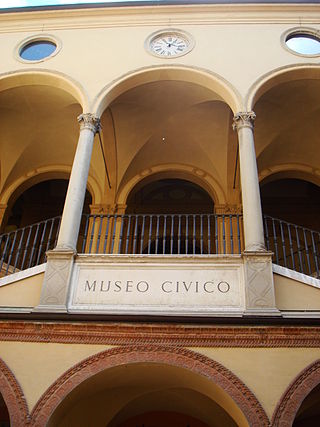
The Archaeological Civic Museum of Bologna is located in the fifteenth-century Palazzo Galvani building at Via dell'Archiginnasio 2 postal code 40124 Bologna, once known as the Hospital of Death. Founded in September 1881 by the merging of two separate museums: the one belonging to the University of Bologna – heir of the Room of Antiquity belonging to the Academy of Sciences founded by Luigi Ferdinando Marsili in (1714) – and that belonging to the City of Bologna (enriched by the antique collection of Artist Pelagio Palagi and the large amount of finds from excavations conducted in and around Bologna during these times.
22. Cattedrale di San Pietro

Bologna Cathedral, dedicated to Saint Peter, is the cathedral of Bologna in Italy, and the seat and the metropolitan cathedral of the Archbishop of Bologna. Most of the present building dates from the 17th century, with a few parts from the late 16th century.
23. Giardino del Guasto
Il giardino del Guasto is a public garden in Bologna, Italy, located near Piazza Verdi. The name of the garden derives from having been built on the rubble of an important noble palace, Palazzo Bentivoglio, destroyed in 1507.
24. Teatro Dehon
The Dehon Theater is a theater in Bologna, Italy, built under the church of Santa Maria del Suffragio at the intersection of Via Libia and Via Sante Vincenzi, in the Cyrenaica district of the San Donato-San Vitale district.
25. Museo di Palazzo Poggi
The Palazzo Poggi Museum is a university museum in Bologna, Italy. The same building houses the headquarters of the Alma Mater Studiorum and other university museums, such as the Specola Museum and the European Student Museum (MEUS).
26. Museo della Specola
The Specola Museum is located in the astronomical tower erected at the beginning of the eighteenth century on Palazzo Poggi in via Zamboni, 33 and represents the historic headquarters of the Department of Astronomy.
27. Cripta di San Zama
The crypt of San Zama is a place of worship in Bologna, located within the complex dedicated to Saints Naborre and Felice and is considered one of the oldest Christian places in the city. It stands on the remains of what, according to tradition, was the home of Vitale and Agricola, the two protomartyr saints of Bologna. The crypt is a monument of great importance both from an artistic and historical point of view, because the Christian roots of the Emilian capital lie in this place.
28. Botanical Garden
The Orto Botanico dell'Università di Bologna, also known as the Orto Botanico di Bologna, is a botanical garden operated by the University of Bologna. It is located at Via Irnerio, 42, 40126 Bologna, Italy, and open daily except Mondays.
29. San Colombano

The Oratory of the Madonna of San Colombano, also called the Chiese di San Colombano e Santa Maria dell'Orazione is a religious site in central Bologna, found on Via Parigi #5, near the Bologna Cathedral.
30. Parco della Montagnola
The Park of Montagnola is one of the oldest and greenest public parks in the centre of Bologna, Italy. It was first opened in the 17th century. It commemorates the victory of the Italians over the Austrians in 1848. The park has a number of 19th and early 20th century sculptures. It is used for various events.
31. Monumento ossario ai caduti della Grande Guerra
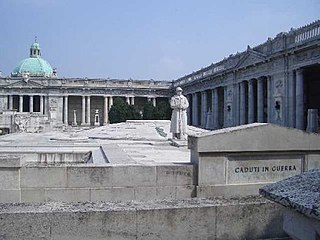
The ossuary monument to the fallen of the Great War, also known as the Ossuary of the fallen 1915-18, is a monumental ossuary dedicated to the fallen of the First World War, located in the field of Cloister VI of the monumental cemetery of the Certosa di Bologna.
Wikipedia: Monumento ossario ai caduti della Grande Guerra (IT)
32. Palazzo Fava
Palazzo Fava or Palazzo Fava-Ghisilieri is a historic palace at 2 via Manzoni in Bologna, now housing art exhibitions and the Caffè Letterario Carracci Fava. It is most notable for its three rooms of frescoes of scenes from the lives of Jason, Medea, Europa and Aeneas by Ludovico Carracci, Agostino Carracci and Annibale Carracci, commissioned in 1584 by Filippo Fava - he was introduced to them by his tailor Antonio, Agostino and Annibale's father.
33. Santuario del Corpus Domini
The Church of Corpus Domini, also known as the Chiesa della Santa is a Roman Catholic church in Bologna. It is part of an active monastery complex of the order of Clarissan nuns, that is nuns of the contemplative Second Order of St. Francis. The monastery is semi-cloistered.
34. Teatro Eleonora Duse

The Teatro Duse is one of the oldest extant theaters in the city of Bologna, Italy. Located in the Palazzo del Giglio, the theatre's address is at 42 Via Cartoleria, 40124. Built by the engineer Antonio Brunetti, it opened as the Teatro Brunetti in 1822. In 1898 it was re-named for the actress Eleonora Duse. While more frequently used as a venue for plays during its history, the theatre has also presented other types of performance such as operas and concerts. The opera composer Guglielmo Zuelli conducted operas at the theatre in the mid to late 1880s. In the 1890s the conductor Antonino Palminteri was active as a resident opera conductor at the theatre. Gialdino Gialdini's opera I due soci premiered at the theatre on 24 February 1892.
35. Sant’Andrea di Quarto Superiore

Sant'Andrea Apostolo di Quarto Superiore is a Roman Catholic parish church located in the frazione, or neighborhood, of Quarto Superiore in the San Donato-San Vitale quarter of Bologna, region of Emilia Romagna, Italy.
36. Porta San Felice
Porta San Felice was the westernmost gate or portal of the former outer medieval walls of the city of Bologna, Italy. It led into Via Emilia, here Via San Felice changes name to Via Aurelio Saffi, After crossing the Viali di Circonvallazione of Bologna.
37. Basilica di San Domenico
The patriarchal basilica of San Domenico is located in Bologna and is the sanctuary that houses the mortal remains of the saint of the same name, founder of the Order of Friars Preachers, who died in 1221 in a cell of the adjoining convent, which he himself established, and where the first General Chapters that gave shape to the order were held.
38. Chiesa di San Martino
The Basilica of San Martino Maggiore is located in the homonymous square in the historic center of Bologna. It constitutes a parish lined with the Carmelite fathers. In August 1941 Pope Pius XII elevated it to the dignity of a minor basilica.
39. Monumento ai caduti del VIII Agosto 1848

The monument to the fallen of 8 August 1848, also known as the Popolano, is a bronze statue located in Piazza VIII Agosto in Bologna, at the entrance to the Montagnola Park. A work by Pasquale Rizzoli dated 1903, it was modeled in memory of the day when the Bolognese people drove the Austrians out of the city after a firefight.
Share
How likely are you to recommend us?
Disclaimer Please be aware of your surroundings and do not enter private property. We are not liable for any damages that occur during the tours.
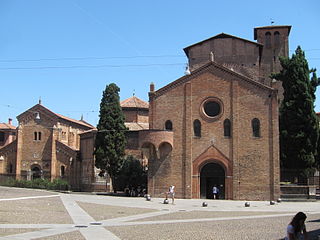

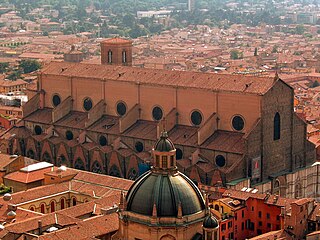

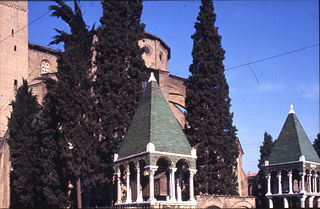
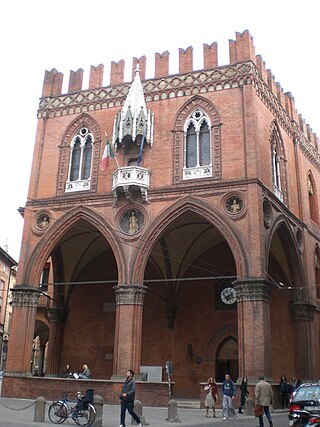
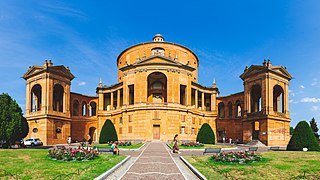
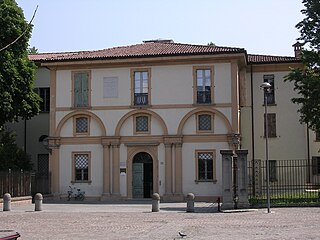
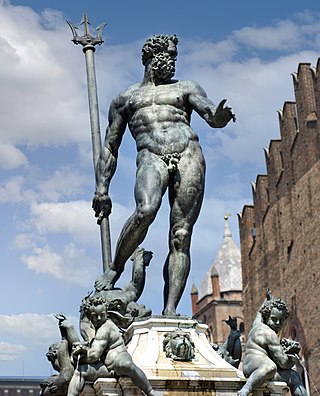

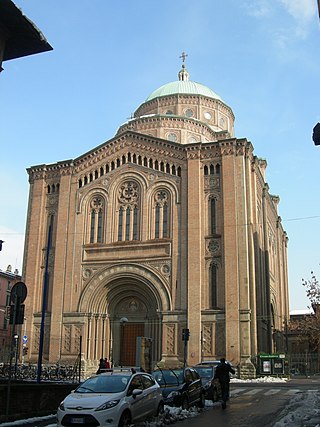
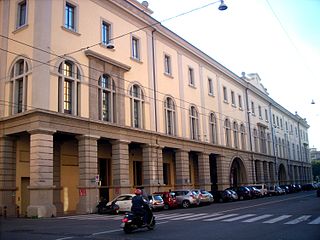

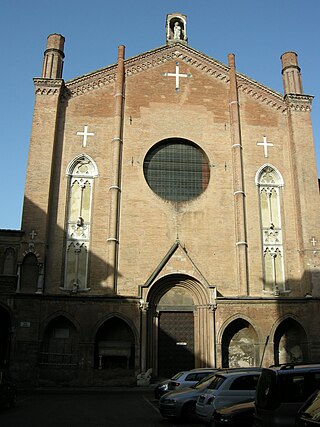

.jpg)
